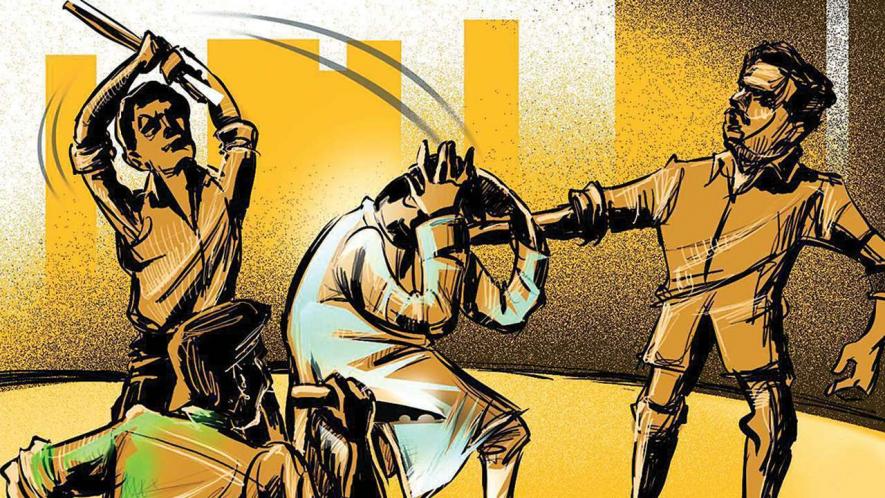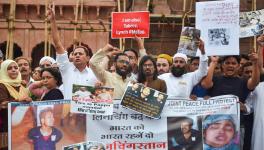How Indian States Can Stop Rampaging Lynch Mobs

Representational Image. Image Courtesy: DNA India
Earlier this week, 11 individuals accused of lynching Tabrez Ansari in Jharkhand in June were charged by the police with culpable homicide not amounting to murder. Media reports indicate that the more serious charge of murder was not pressed against the accused as the postmortem report indicated that Tabrez had died of cardiac arrest. This development has reignited the debate on the steps that need to be taken to stop incidents of mob violence and lynching in the country. The first step in this direction was taken by the Supreme Court last year.
The apex court, while hearing the case of Tehseen Poonawalla vs the Union of India on 17 July 2018, gave a detailed order addressing the issue of mob lynching. The court observed, “Mob vigilantism and mob violence have to be prevented by the governments by taking strict action... Rising intolerance and growing polarisation expressed through [a] spate of incidents of mob violence cannot be permitted to become the normal way of life or the normal state of law and order in the country.” The court issued guidelines to be followed by the state governments to curb mob lynching.
A little over a year has passed since the apex court issued these guidelines. So far, three states have given legislative backing to the guidelines issued by the Supreme Court. Manipur was the first state to do so followed by Rajasthan and West Bengal. The Manipur government initially promulgated an ordinance in November 2018 and a few days later the state’s legislature passed the Manipur Protection from Mob Violence Act. Rajasthan and West Bengal have used the Manipur law as a template. Last month they enacted a law to prevent mob lynching in their respective states. The Supreme Court’s guidelines to prevent lynching are at the heart of the laws passed by these three states.
The court formulated a three-pronged approach to putting an end to mob lynching. The first step requires states to take preventive steps to ensure that lynching does not occur. The court’s guidelines mandate the states to identify regions where lynching could occur. The guidelines also prescribe that in every district a senior police officer should be designated as the nodal officer to take measures to prevent lynching. They specify that the nodal officer should take steps to prevent the creation of a hostile environment against any community or caste. The officer is also required to prevent the spread of messages or videos that could incite mobs. Also, regular situational review and coordination meetings between police and state administration are part of the preventive approach prescribed by the court. The guidelines categorically state that every police officer shall be duty-bound to disperse a mob which may cause lynching.
In case the preventive measures fail, the court’s guidelines prescribe remedial measures which include protection to witnesses, legal aid to victims or next of kin and time-bound completion of judicial proceedings. The guidelines also direct the states to create a scheme to provide compensation to victims of lynching/mob violence. The final step in the court’s approach to curbing lynching is to hold the police or district administration officers accountable for their negligence in preventing incidents of lynching.
The laws passed by the Manipur, Rajasthan and West Bengal have incorporated most of the Supreme Court’s guidelines. These laws define lynching as an act of violence by a mob on the grounds of religion, caste, sex, place of birth, language, dietary practices, sexual orientation, political affiliation and ethnicity. They also define “offensive material” whose spread has to be checked and what constitutes a “hostile environment”. But the laws of the three states are not entirely similar.
For example, the Manipur law empowers the state government to impose a collective fine on the inhabitants of an area if the government is satisfied that they are involved in lynching or a connected offence. The Rajasthan law does not have this provision. The two states also differ in their approach to holding police officers responsible for their failure to prevent lynching. Manipur’s law punishes its police officer with one year’s imprisonment while the Rajasthan law does not have a similar provision. However, the two states have the same punishment for the act of lynching. They provide that in case of the death of a victim of a lynching, the perpetrators of the crime will be punished with rigorous imprisonment for life. The West Bengal law, on the other hand, provides the death penalty as the maximum punishment for this offence.
Stringent laws are not the only solution to a problem. They are part of the solution set and have to be supplemented with other measures. For maintaining law and order in the states, the most important requirement is that of an adequate, professional and responsive police force. Data from the Bureau of Police Research and Training points to gaps in the police forces of our states. For example, our police forces are severely overburdened. In 2017, state police forces had a 21.8% vacancy in their ranks. They also face constraints in their mobility and weaponry.
While resource constraints can be met over time, our police forces are plagued with a problem of a much more serious nature, and that is of political interference in their functioning. In 2006, the Supreme Court in the landmark case of Prakash Singh Vs Union of India observed, “The commitment, devotion and accountability of the police has to be only to the rule of law. The supervision and control has to be such that it ensures that the police serves the people without any regard, whatsoever, to the status and position of any person while investigating a crime or taking preventive measures”. The court directed a slew of measures to protect the police from outside interference. However, the apex court’s directions have not been comprehensively implemented by the states.
The dastardly act of lynching has no easy solution. The responsibility of state legislatures should not be limited to enacting a law providing strict punishments. State legislatures need to be continuously involved with the issue. Their involvement should extend to an in-depth discussion with respect to budgetary requirements of police and judiciary and a continuous holding to account of the state administration for every unlawful act of lynching in the state.
Chakshu Roy heads legislative and civic engagement initiatives at PRS Legislative Research. Views are personal.
Get the latest reports & analysis with people's perspective on Protests, movements & deep analytical videos, discussions of the current affairs in your Telegram app. Subscribe to NewsClick's Telegram channel & get Real-Time updates on stories, as they get published on our website.
























